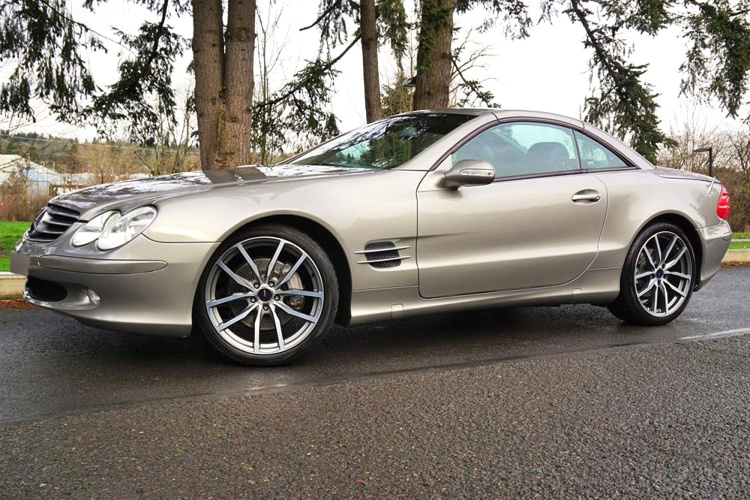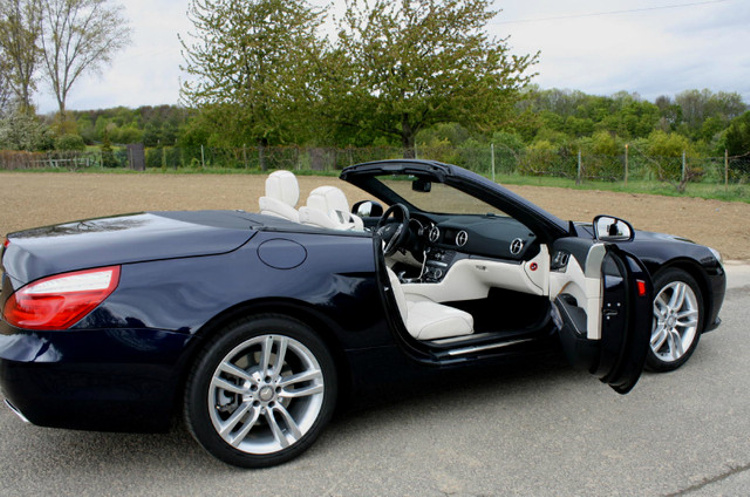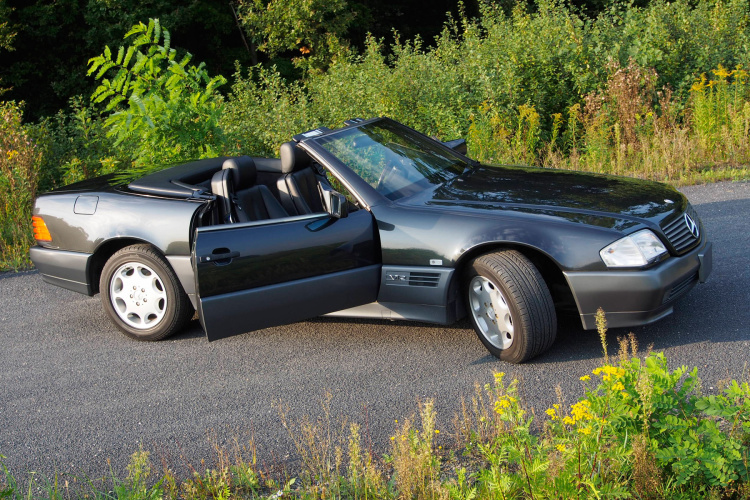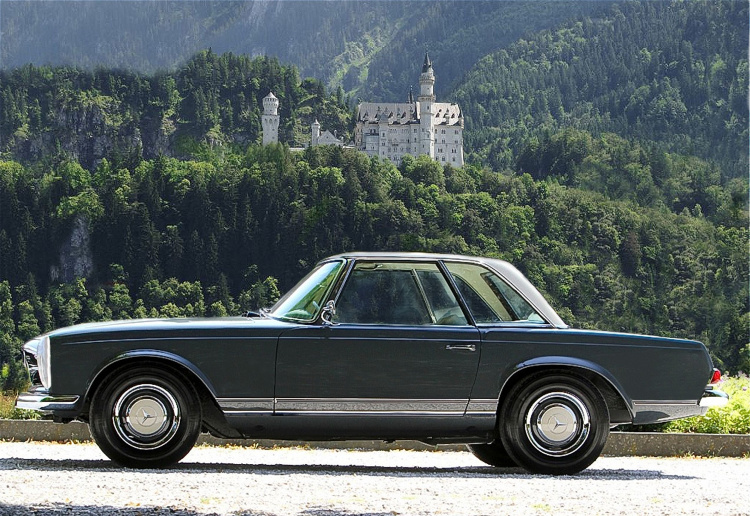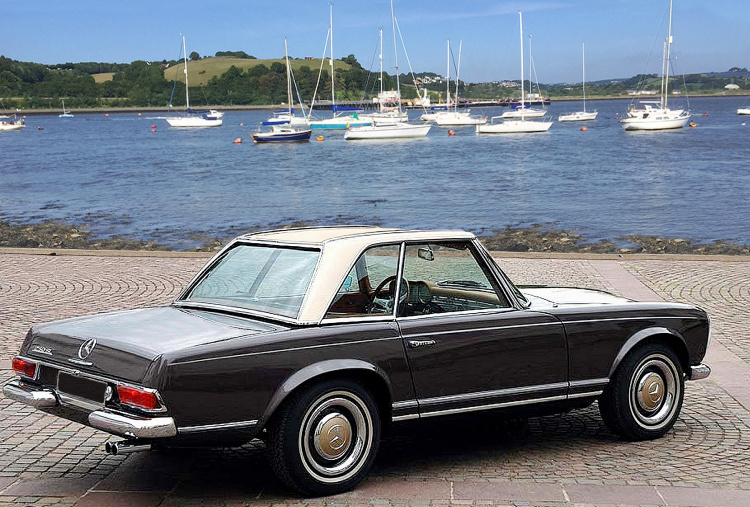The Mercedes R107 500SL Rally car

The Mercedes R107 Rally car does not really come to mind, if one thinks about Mercedes rally activities. Anyone familiar with them knows that Daimler-Benz used only two road-going SL cars for factory supported racing: the 300SL W198 and the 230SL W113. And that was it.
Well… was it really? What about a Mercedes R107 500SL Rally car? Yes, it was used as a rally car, but then…it wasn’t. Ok, before I confuse you completely, let me tell you the story of the (almost) forgotten SL rally car. In the late 1970s, Daimler-Benz, under the leadership of Erich Waxenberger, competed in several World Rally Championship events. The car they used in 1978, 1979 in Group 4 was the 450SLC 5.0 C107.
In 1980 the car was slightly updated with black wheel arch extensions and used as 500SLC for Group 2 rally events in Argentina, New Zealand and the African Bandama Rally. Initially it had 305 hp and although this was later upgraded to 329 hp, the big coupe was too heavy and too long for such kind of activities. A lighter alternative was needed.
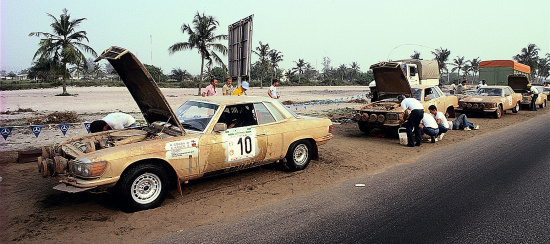
Four 450SCL 5.0 being cleaned at a rally in 1979
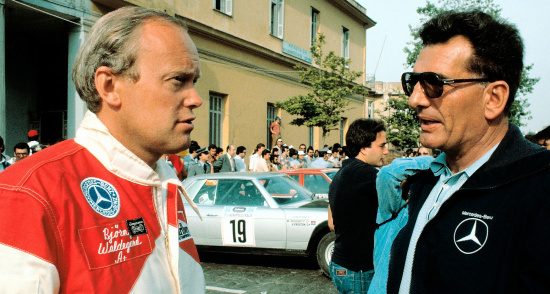
Erich Waxenberger (right) with rally-driver Björn Waldegaard at the 27. International Rallye Akropolis, 26.- 29. May 1980.
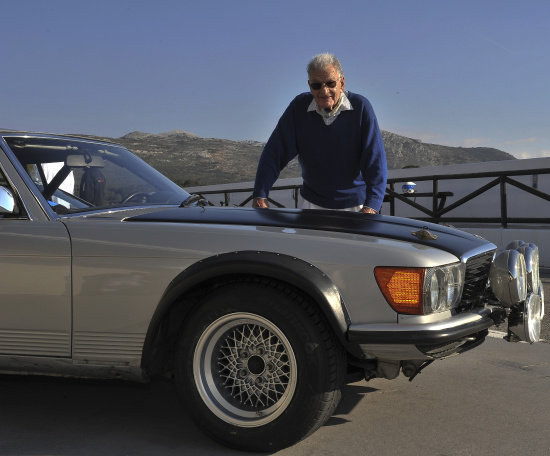
Erich Waxenberger in 2012 with the Mercedes R107 500SL Rally
The 500SL Rally
In for the 1981 World Rally Series was the Mercedes R107 500SL Rally. Waxenberger had the car fitted with an aluminum roll cage and replaced some of the metal chassis panels with thinner ones normally used in sedans. The roof was not welded but bolted on with seven screws. All glass areas except the windshield were replaced with polycarbonate material.
The windshield could not be replaced as it was bonded to the frame and needed for the overall rigidity of the car. Much of the interior was also changed, with the Recaro plastic driver’s seat weighing only 4kg. In the end, the new Mercedes R107 rally car weighed 1,350 kg (2,976 lbs). This was some 236 kg (520 lbs) lighter than the 500SLC.
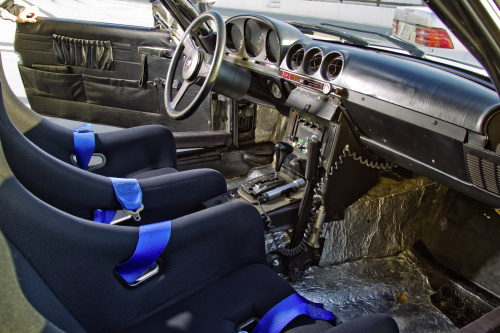
On the internet and in some publications you can read that the SL had 340 hp, even 380 hp, but this is not supported by Daimler-Benz documents. But as a novelty it had a four-speed automatic transmission that could be shifted manually. Most of the time only 3rd and 4th gear was needed. Since high top speeds were not so important, the car was equipped with a shorter final drive ratio of 1:4.08. This resulted in an acceleration from 0 to 100 km/h of 5.9 seconds and a top speed of 220 km/h.
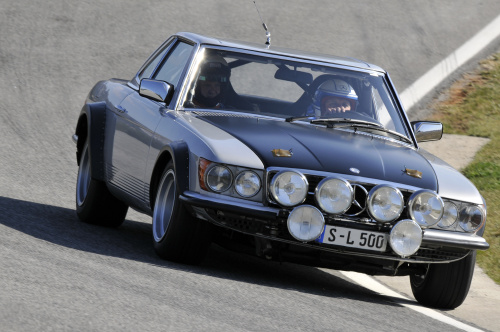
This SL500 seems to be the only existing example?
Who should drive the R107 Rally car?
Four cars were prepared and all that was needed was an experienced driver to handle the beast. It was first used as a test car at the Bandama Rally in 1980. The Bavarian Walter Röhrl had just won the 1980 World Rally Championship for Fiat with co-driver Christian Geistdörfer in a 131 Abarth.
Equipped with a ten-year contract, Röhrl immediately began testing the 500SL for its potential to win the 1981 World Rally Championship for Daimler-Benz. Compared to the Abarth Fiat, the Mercedes was much heavier, louder. And with its limited slip differential (80% locking rate) and a revised parking brake with an upright lever, it could not only thrill the spectators with its sound, but especially with spectacular drift angles. These drifts were necessary because the big V8 engine made the car quite front-heavy.
The driver had to swing the car around before entering a corner, otherwise the beast would have continued straight on, no matter in which direction the front wheels were pointing. But not to worry, Walter Röhrl was just the man for the job. On the other hand, Daimler-Benz engineers were aware of this slight handicap and had already drawn up sketches of how the car could be converted to a mid-engine layout.
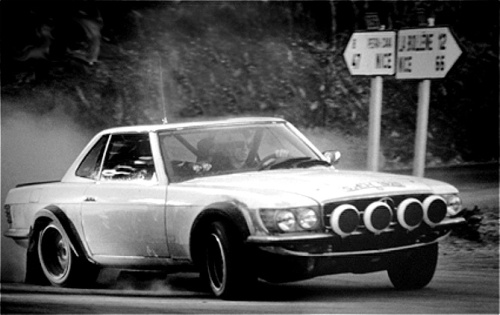
Walter Röhrl testing the car at the end of 1980 in Southern France
Will the Mercedes R107 500SL Rally car really be used?
In December 1980, Waxenberger had just returned from the Bandama Rally (his two 500SLCs had finished 1st and 2nd), when the Board of Management met to decide on funding for the 1981 rally season and beyond. Waxenberger, who was invited to present his case, promised to deliver the World Rally Championship to Daimler-Benz in time for the 100th anniversary of the automobile in 1986.
However, there was a small problem: Prior to this meeting, a slightly skeptical board member had asked Walter Röhrl if it was possible NOT to win the Monte Carlo Rally in January 1981. Neither Röhrl nor Waxenberger had plans to dominate the rally circus from the start with the new car, so a cautious Röhrl replied that he expected to finish in the top five.
Oops, that was not what the board member wanted to hear. As a result, the board (which had been informed of Röhrl’s answer) did not really trust Waxenberger’s promise in this crucial meeting. After much debate, they finally agreed to fund the racing activities with one car instead of two.
Waxenberger’s wrong move
Of course, this was not what Waxenberger needed. After all, he had four cars and two world-class drivers in Walter Röhrl and Ari Vatanen. So he told a somewhat stunned board that if he could not get the funding for two cars, he would rather stop all racing activities. With that, he stood up and walked out of the room. Of course, he expected the board to give in to his demands and call him back.
He had heard that the former head of corporate design, Karl Wilfert, had made such moves fairly frequently. That way for example, Wilfert got the W113 pagoda roof approved. The problem was that Wilfert had always played his moves very carefully, making sure that he had at least one or two board members on his side before such a scenario. Waxenberger had no one to support his position. The case was closed. Suddenly the reigning World Champion Röhrl, his co-driver Geistdörfer and their Finnish colleague Vatanen were out of a job. What a Christmas present.

No further plans for the Mercedes R107 500SL Rally car
As abrupt as it may seem to the outside world, Röhrl’s honest answer and Waxenberger’s threat may not have been the only reason for the board to cancel the rally project. It was rumored that Daimler-Benz had a budget for a single rally (using the SLC and the 280E W123) that other car manufacturers had for the entire rally season. At the time, Mercedes cars were selling very well and customers were complaining about long waiting lists. There was no reason to spend a large amount of money on an exercise that would not guarantee the company a first-class finish.
It was feared, with some justification, that a less than stellar performance could even have a detrimental effect on overall Mercedes car sales, as the iconic image could suffer from a rally defeat. From today’s point of view, such thoughts may seem a bit bizarre. But back then, with the “super image” the company enjoyed, any threat of finishing second or, God forbid, even third was unacceptable to a proud Mercedes manager.
In addition, the competition was not seen by the public as being on a par with Daimler-Benz. The competition was no longer Ferrari and Jaguar as in the 1950s. No, the competition was Fiat and Opel. How can an Opel beat a Mercedes! The press would have had a field day coming up with headlines in big bold letters that read: Fiat and Opel better than Mercedes.
But the story continues
Although it was the end of the Mercedes R107 500SL rallying under the official Daimler-Benz flag, it was not the end of car rallying. The running stock and most of the spare parts were still there and a lot of people were quite eager to get their hands on it and prove to the company that even with a limited budget something could be done to make the 500SL shine. Since the 1950s (and even earlier) it was common practice to destroy abandoned projects. Abandoned rally cars were no different. Well, this time it was a little different…
And if you are interested to read, how this truly fascinating story continues and whether or how many of the original cars survived, here is the link to my R107 book and e-book. It does not only deal with the rally cars, it covers the entire history of both the R107 and C107. It also offers a comprehensive buyer’s guide and explains chassis number and data card in detail. The link above leads you to the US Amazon site, The books are available in other countries under the same title on the respective Amazon site.
Oh, by the way, just in case you happen to see a silver Mercedes R107 500SL Rally car being displayed officially in a Mercedes booth or see it participating in some vintage rallies, nope it ain’t the real thing 🙂
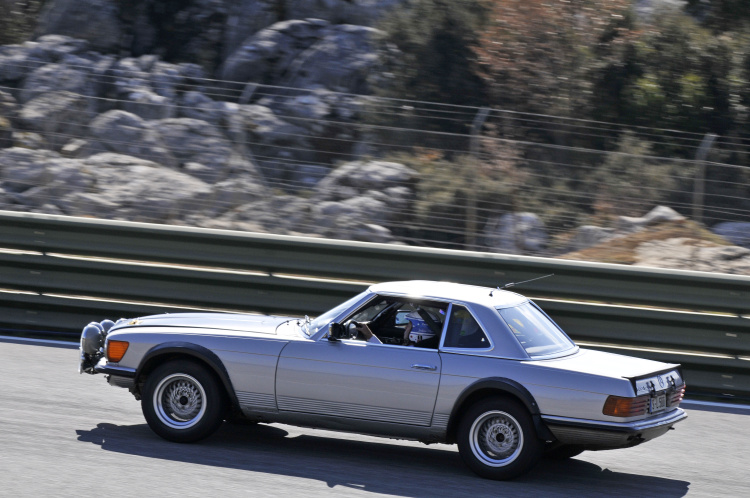
(All pictures in this 500SL blog are courtesy of the Mercedes-Benz Group AG)
